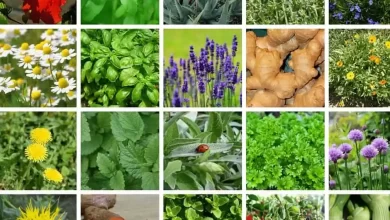Horsetail: [Properties, Benefits and Cultivation [Complete Guide]
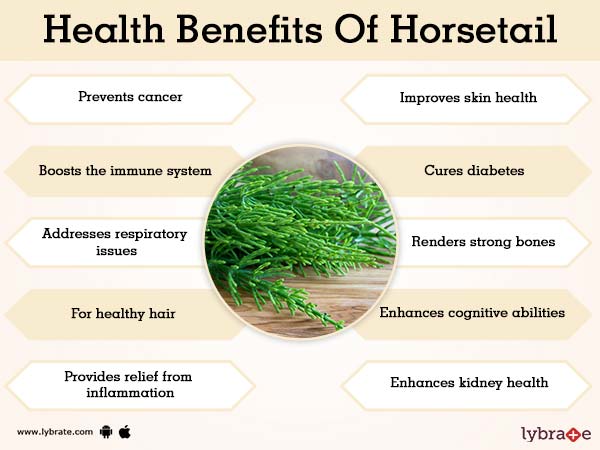
In this article you will learn what horsetail is, as well as what care it requires if you intend to grow it in your garden. You will also learn about the different varieties and why it is considered an invasive plant.
The Horsetail (Equisetum arvense), is a shrub belonging to the group of Cryptogams, and is known for its many medicinal properties for humans.
Did you know…Horsetail is one of the oldest known plants due to its enormous resistance to diseases and its easy propagation and growth? Fossils from the Devonian period (about 408 million years ago) have been found.
 It serves to prevent most diseases caused by fungi due to the action of salicylic acid, one of its major components.
It serves to prevent most diseases caused by fungi due to the action of salicylic acid, one of its major components.
This plant grows well in moist places. It is currently cultivated in Europe, Asia, Africa, and North America. It normally matures between June and July and is harvested in the summer.
It has been seen that Horsetail can strengthen thelungs, kidneys and bladder.
It is valued for its diuretic, antibacterial and anti-inflammatory properties and is used to treat bronchitis, chronic urinary tract infections. Also, it is used incrops as an excellent insecticide.
What is horsetail?
Equisetum; horsetail, snake grass, puzzle grass is the only living genus of the Equisetaceae, a family of vascular plants that reproduce by spores and not by seeds.
Equisetum is a «living fossil», the only living genus of the entire subclass Equisetidae, which for more than 100 million years was much more diverse and dominated the understory of late Paleozoic forests.
Some horsetails were large trees that reached 30 meters in height.
The genus Calamites of the family Calamitaceae, for example, is abundant in Carboniferous period coal deposits. The spacing pattern of nodes in horsetails, in which those toward the apex of the shoot are drawn closer together, inspired John Napier to invent logarithms.
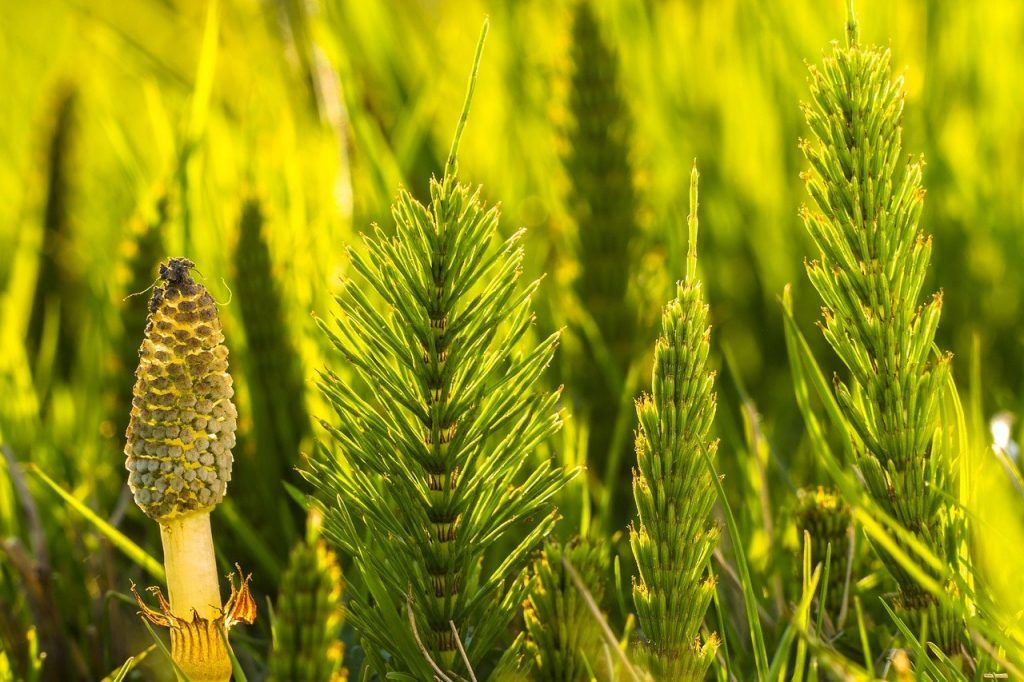
Modern horsetails first appeared during the Jurassic period.
A superficially similar but totally unrelated genus of flowering plants, mare’s tail (Hippuris), is occasionally called «horsetail». The name «mare’s tail» is sometimes applied to Equisetum, leading to further confusion and error.
Despite having been used for centuries in traditional medicine, there is no evidence that Equisetum has any medicinal properties.
Characteristics of the horse tail
| Botanical name: | Equisetum hyemale. |
| Common name: | Horsetail, rough horsetail, sulfur rush. |
| Plant type: | Evergreen perennial. |
| adult size: | 60-250 centimeters high, 30-180 centimeters wide. |
| Sun exposure: | From full sun to partial shade. |
| Floor type: | Moist, well drained. |
| soil pH: | 6.5 to 7.5 (slightly acidic to slightly alkaline). |
| Flowering time: | plant without flower |
| flower colour: | plant without flower |
| Native area: | North America, Eurasia. |
| Toxicity: | Toxic to grazing animals. |
Horsetail Description
Equisetum arvense (field horsetail)
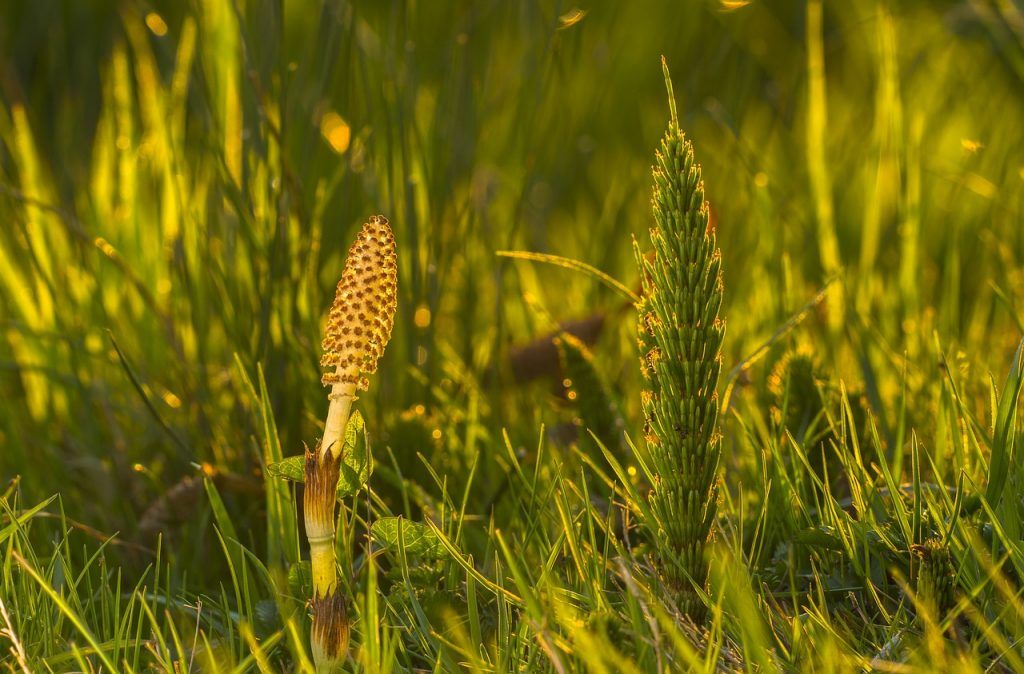
Equisetum leaves are greatly reduced and are not normally photosynthetic.
They contain a single unbranched vascular trace, which is the defining characteristic of microfilaments.
However, it has recently been recognized that horsetail microfilaments are probably not ancestral as in lycophytes (mosses and relatives), but rather derivative adaptations, evolved by reduction of megaphylls.
Horsetail leaves are arranged in whorls fused into nodal sheaths. Stems are usually green and photosynthetic, and are characterized by being hollow, jointed, and ridged (sometimes 3 but usually 6-40 ridges).
There may or may not be whorls of branches at nodes.
spores
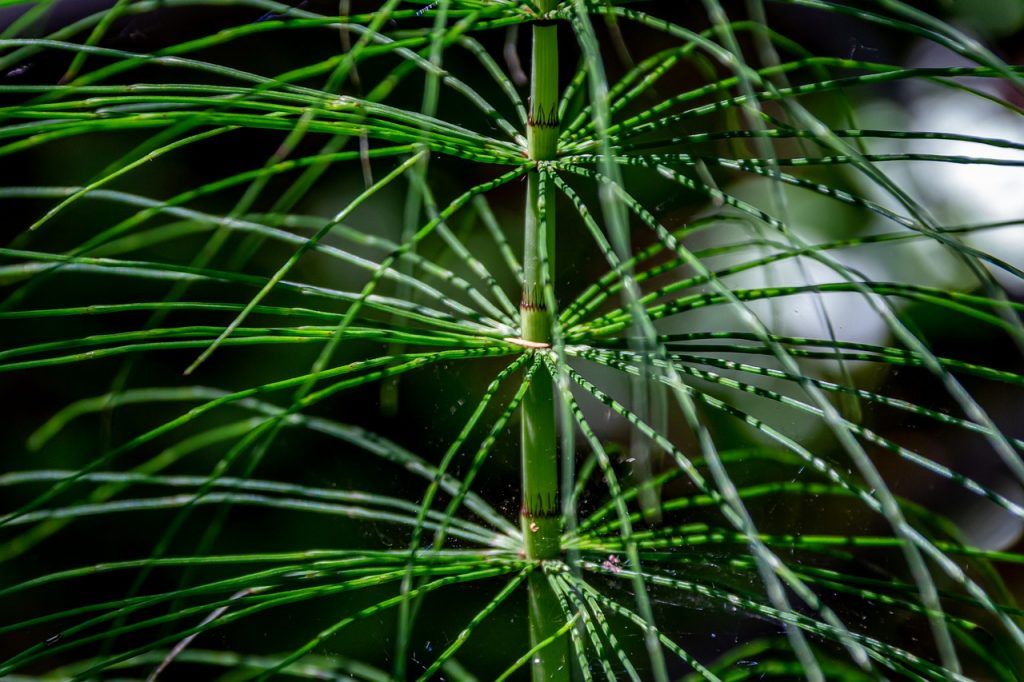
The spores are borne under the sporangiophores in the strobili, conical structures at the tips of some of the stems. In many species the conical shoots are unbranched, and in some (eg Equisetum arvense, field horsetail) they are non-photosynthetic and are produced in early spring.
In other species (e.g. Equisetum palustre, swamp horsetail) they are very similar to sterile, photosynthetic, branch-whorled shoots.
Horsetails are mostly homosporic, although in field horsetail smaller spores give rise to male prothallus.
The spores have four elaters that act as moisture -sensitive springs, aiding spore dispersal by creeping and jumping motions after the sporangia have opened longitudinally.
Horsetail care
Light
Horsetail does well in various light levels, growing in full sun to partial shade, but preferring filtered shade, such as that found on forest floors under tall trees.
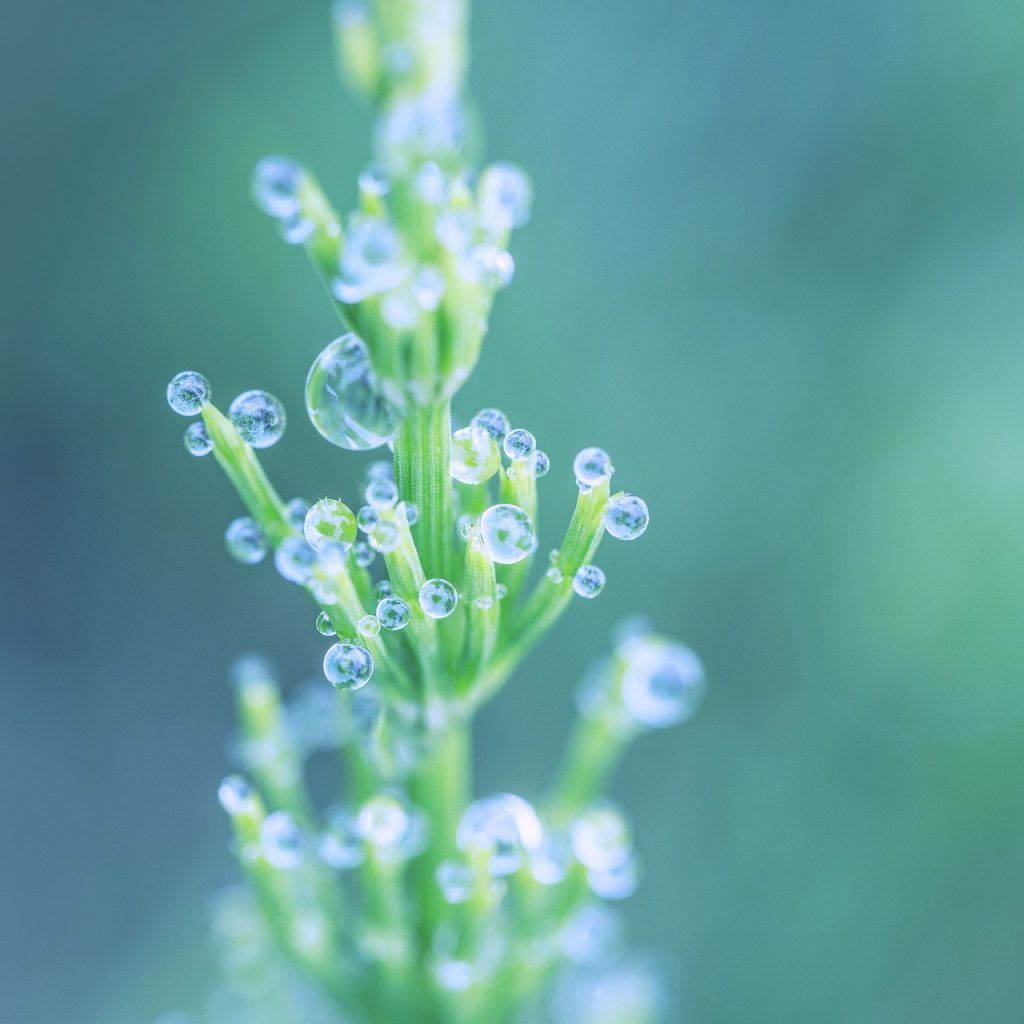
I usually
Horsetail prefers poor, sandy and gravelly soils, which are often moist.
The more fertile the soil, the slower its growth. If you grow horsetail in a pot, consider adding gravel or sand to the potting mix to provide the perfect medium that it enjoys.
Water
Regarding the level of soil moisture, horsetail prefers moderately moist soil.
It can even grow in standing water to a depth of about 10 centimeters. It is very suitable for rain gardens and other areas that can be flooded periodically.
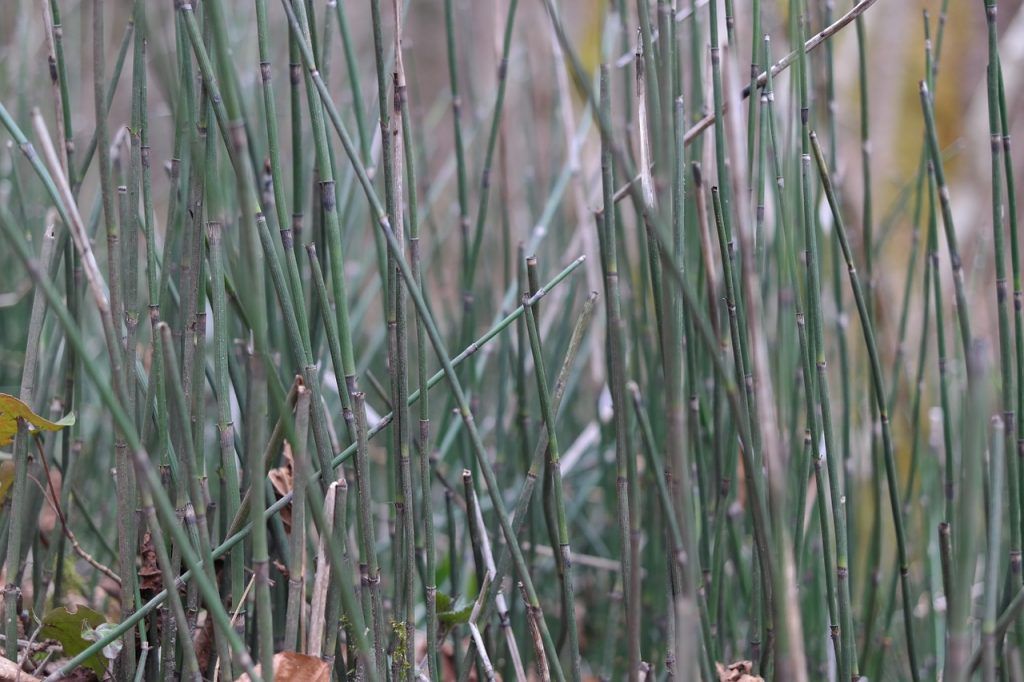
temperature and humidity
Horsetail plants prefer high humidity for several hours a day and thrive in low light. Winter care is not a concern, although the bright green of the stems may fade during cold winters.
Pass
In general, horsetail plants do not like particularly rich or fertile soil, so fertilizing should not be necessary.
How can horsetail help our crops?
 In addition to being a plant used in traditional medicine, it is also used for the cultivation of other plants.
In addition to being a plant used in traditional medicine, it is also used for the cultivation of other plants.
Combined with nettle slurry it can bea huge defense for your crops.
It is a natural insecticideso it is advisable to plant it together with other herbs to avoid the arrival of pests.
However, it must be taken into account that it can become an invasive plant due to its rapid expansion, so it is recommended thatyou prune it regularly.
Similarly, extract of this plant can be sprayed to combat pests if they have already attacked the crop. Some people have used it as a treatment for black spot, mildew, and powdery mildew on roses and tomatoes.
As well as improving the thickness and health of the nails, silicon also helps thicken the cell walls of the leaves, preventing the penetration of fungi and favoring photosynthesis.
In addition, another of its components called equisetonin is toxic to fungi. So, like copper oxychloride, it can be effective against them.
How to plant Horsetail?
- Horsetail needs a lot of moisture to grow. We recommend drip irrigation and if it’s hot, water daily. Avoid flooding of the earth.
- The type of soil you need is slightly acidic, a pH between 6.5 and 7.5.
- It is a fast-growing plant, so you should prune it regularly.
- You can plant it from seed and if it meets the necessary conditions of space, light, and humidity, it will germinate quickly and begin to grow.
- In reality there is not much secret to growing horsetail: it is a plant that needs moisture, grows fast and can even become a problem in your garden due to the ease with which it spreads and invades the ground.
When and how should we collect horsetail?
 The ideal time to start our horsetail collectionIt’s late summer.
The ideal time to start our horsetail collectionIt’s late summer.
The reason: it is when it has more silicon content, and thereforecan be more effective in eliminating possible pests and diseases in our orchard.
With pruning shears, we cut several stems of horsetail and tie them at the bottom with a rope or wire.
Then we can hang them and wait for them to dry. Once they dry, we should cut them into small pieces (the smaller the better).
Where can we find horsetail?
The most common way to take it is in infusions, so you can find it in already packaged tea presentations.
Likewise, horsetail can be grown in an urban garden or in a pot at home.
To prepare the infusions you can boil the plant for five minutes and let it rest for another five minutes.
Due to its content in alkaloids and at high doses and in prolonged treatments it can induce toxicity.
Thus,It is not recommended to administer it in large doses for prolonged periods of time.If you want to treat an illness or disease, you can take it for a month in a row and then stop taking it for the same amount of time.
To avoid contamination of the horsetail, it is recommended that you do not plant it with other similar species such as E. palustre, which has a high palustrin content and is much more toxic.
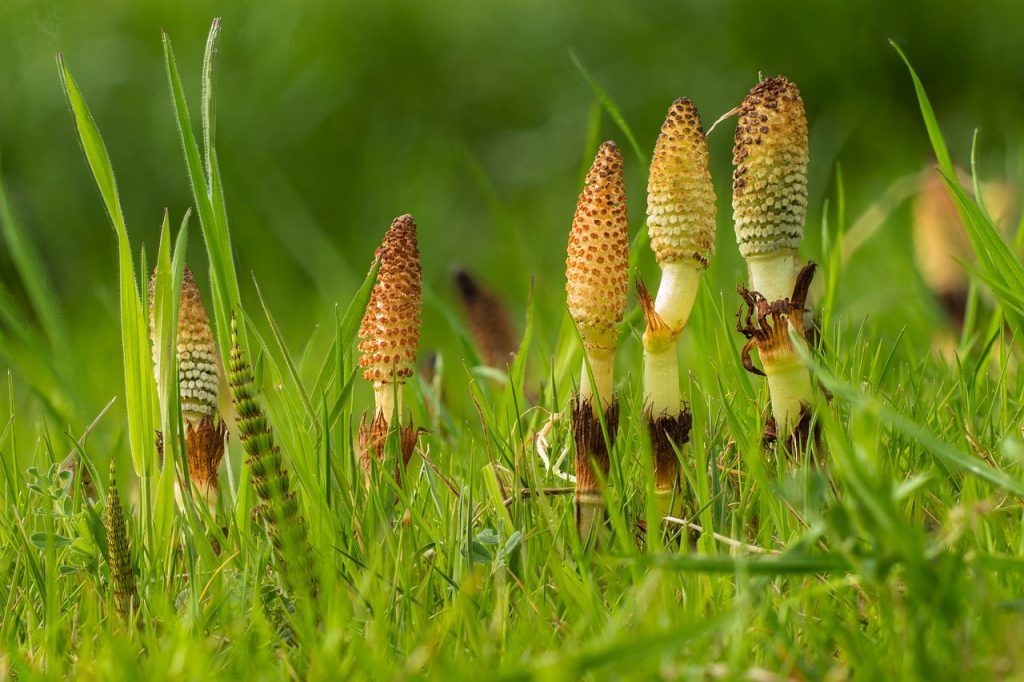
What kind of plant is it?
Horsetail is a plant without a flower, there are many plants that also do not have a flower and are called inferior plants.
Specifically, the horsetail is a shrub of the equisetaceae family. These types of plants use spores to be able to spread and colonize new land.
There is only one family of horsetail, with about thirty species distributed throughout the world. Horsetail with medicinal properties is theSomeand is possibly the most cultivated.
Pests and diseases that can attack you
As it is a plant with a reputation for being invasive, horsetail does not have serious threats from pests and diseases.
The main challenge is to keep this plant under control or to eradicate it where it is not wanted.
Horsetail can even spread its roots under sidewalks, garden walls, and driveways, so removal requires careful digging up and removal of all root pieces.
It is also possible to eradicate horsetail gradually, cutting the cane-shaped stems down to ground level as they appear. This can take several seasons before the plants give up and die completely.
Finally, you can use a systemic herbicide that contains triclopyr, which will kill horsetail. However, several applications may be necessary before completely eradicating this plant.
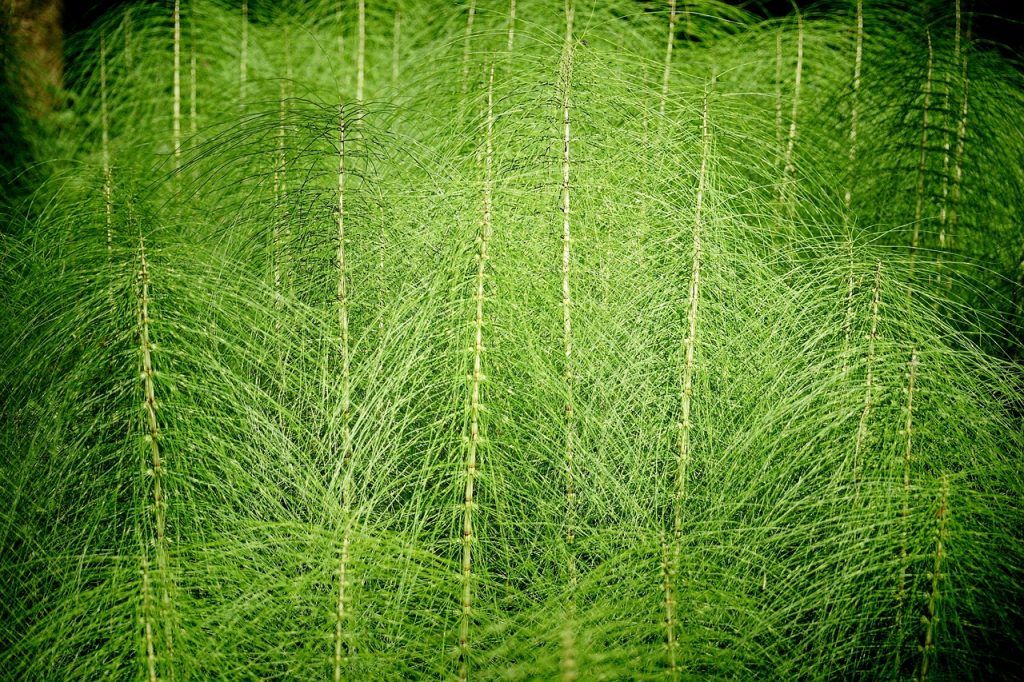
horsetail varieties
Although no cultivars of Equisetum hyemalis exist, there are several related species also known as horsetail.
Equisetum arvense
It is commonly known as field horsetail or corn horsetail.
It is generally classified as a weed because it is as aggressive as Equisetum hyemale but lacks its aesthetic qualities.
Field horsetail can grow up to 50 centimeters tall, but is often stunted by the dryness of the soil in which it grows, so that it only reaches 20 centimeters in height or less.
It is usually a lighter shade of green than that of Equisetum hyemalis. Many landscapes are invaded by the field horsetail; extends even in dry conditions.
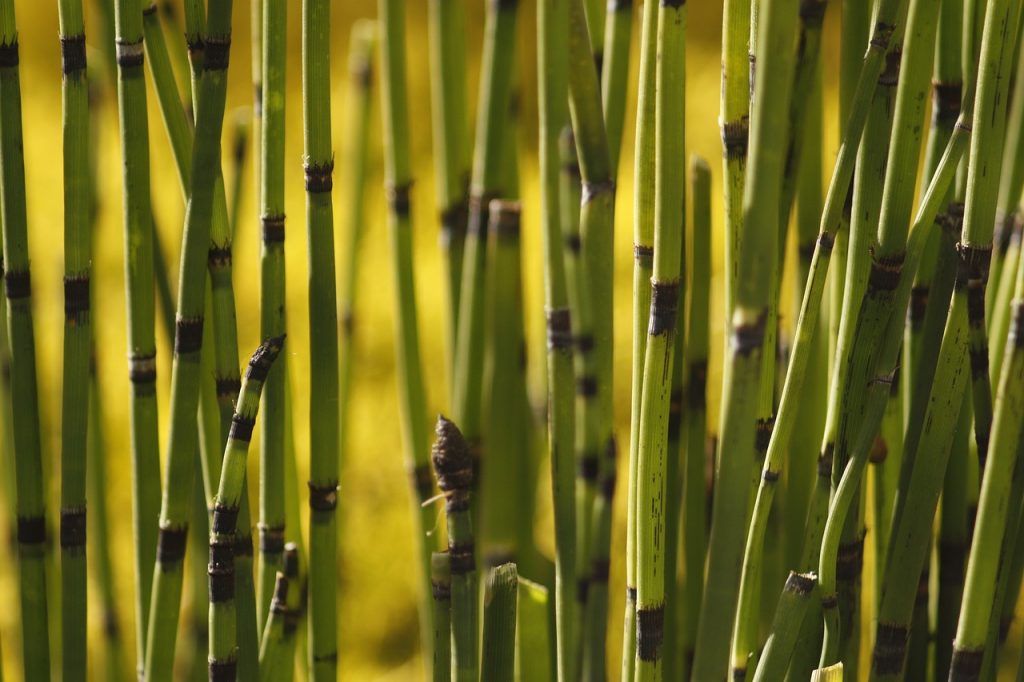
The giant horsetail (Equisetum giganteum)
It is a plant native to Central and South America that is only hardy to zone 8. It can be grown in full sun or partial shade. Its strong point is that it can reach 3 meters in height or more.
Variegated horsetail (Equisetum variegatum)
On the contrary, it is a shorter plant (15 to 30 cm) and more resistant, since it is native mainly to the wetlands of the northern United States and Canada. It is called «variegated» because its black and white pods (on green stems) look better than those of Equisetum hyemalis.
It can be grown in full sun or partial shade.
What medical applications does horsetail have for humans?
- Horsetail is a plant considered medicinal. This is due to the large amount of active ingredients, minerals and vitamins that it gives us.
- Contains abundant silicon, which serves to increase collagen and elastin, which improve joint flexibility by strengthening tendons and cartilage. It helps the bones absorb calcium and increases elasticity in the muscles. Likewise, it has a powerful detoxifying effect, helping cells to be more resistant to attack by free radicals.
- The collagen produced thanks to the participation of silicon, greatly nourishes the skin and nails, keeping them hydrated and strong. Horsetail also helps prevent the appearance of pimples, eczema and wrinkles, and can even reduce stretch marks.
- Potassium is an element present in the plant, it benefits the body by allowing cells to carry electrical impulses, this means that it helps in the contraction of skeletal and smooth muscle and is essential for cardiac function.
- It has a significant amount of flavonoids, which have a diuretic action on the body. Horsetail also increases urine production due to its mineral salts and flavonoids, which also have great antioxidant power.
- Likewise, it helps treat fluid retention problems and helps eliminate possible pathogenic microorganisms through urine. It is effective in treating kidney stones, urinary infections, cystitis, urethritis, and inflammations of the bladder or prostate.
- Due to its diuretic action, it can present weight loss, however, it is important to emphasize that what is lost are liquids and not fats. On the other hand, it turns out to be purifying by eliminating the toxins present in the body.
- Helps the cardiocirculatory system by treating diseases such as anemia, bleeding and arteriosclerosis. It has also been noted to help treat conditions such as rheumatism, osteoporosis, tendonitis, and gout. Helps recover from fractures.
References and bibliography
-
Cola de Caballo , MP Capilla – REDUCA, 2012 – revistareduca.es
-
[PDF] Horsetail in phytotherapy, JL Berdonces – Natura Medicatrix: Medical journal for the study…, 1985 – dialnet.unirioja.es
-
[BOOK] Use of medicinal plants, C Hoogesteger – 1994 – books.google.com
-
Mildew (Bremia lactucae) and Sclerotinia (Sclerotinia sclerotiorum) in lettuce (Lactuca sativa), using extracts of Horsetail (Equisetum arvense), Nettle …, VV Tayupanta Rodríguez – 2013 – dspace.ups.edu.es
-
[PDF] “ Horsetail ” plants, YP Atilano – HGOM HERBARIUM DISSEMINATION Bulletin…, 2013 – academia.edu
-
[PDF] The pharmacology of Equisetum arvense-A review, AE Al-Snafi – IOSR Journal of Pharmacy, 2017 – academia.edu
-
Evaluation of the efficacy of sulfur and garlic and horsetail extracts in the control of rust in organically grown plum trees, LF Pérez-Romero, A Daza… – XVII Congress of the…, 2014 – researchgate.net
-
Possible use of herbicides in the control of horsetail and the selectivity of oats and ryegrass. G Dalazen, N Diehl Kruse, LS de Oliveira Machado – sidalc.net
-
Effect of three plant extracts (horsetail, dandelion and rue) for growth inhibition of Fusarium oxysporum, NM Tenorio Ordoñez – 2020 – repository.usfq.edu.ec
-
[CITAS] … application of horsetail extract (Equisetum arvense), for the control of fungi Fusarium spp., Phytophthora spp. and Sclerotium spp., in the crop … R BARRIENTOS GONZALEZ – 1996 – sidalc.net

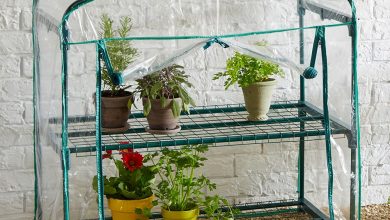
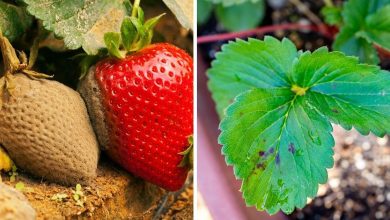
![Photo of The Acacia Tree: [Characteristics, Planting, Care, Irrigation and Substrate]](https://www.complete-gardening.com/wp-content/uploads/2022/08/the-acacia-tree-characteristics-planting-care-irrigation-and-substrate-390x220.jpg)
